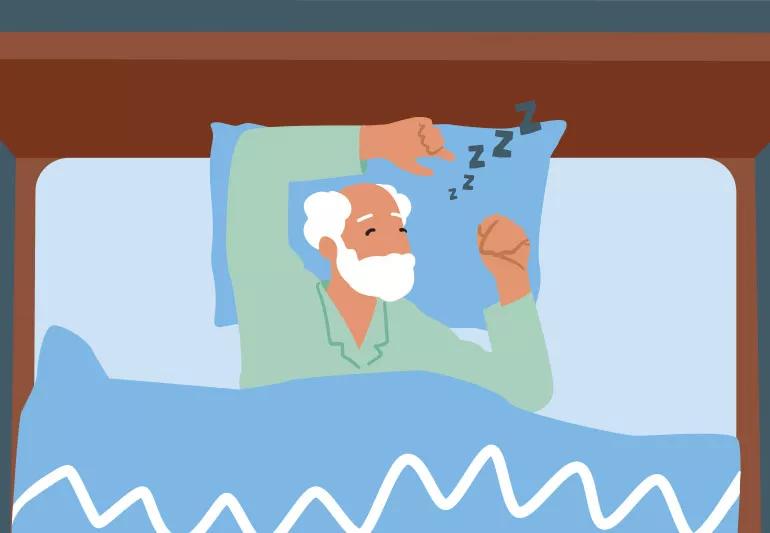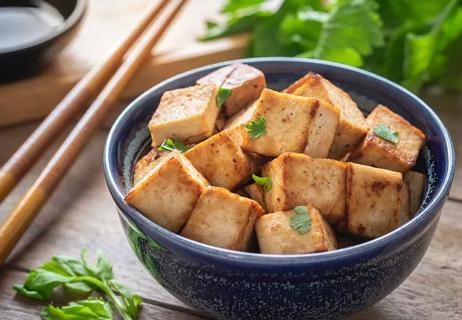Advertisement
Sleep, diet and exercise can help

The autoimmune condition rheumatoid arthritis affects your joints, but it’s considered a systemic illness. That means your whole body feels an impact, with symptoms that ebb and flow depending on multiple factors.
Advertisement
Cleveland Clinic is a non-profit academic medical center. Advertising on our site helps support our mission. We do not endorse non-Cleveland Clinic products or services. Policy
One of the biggest side effects of rheumatoid arthritis is fatigue. Rheumatologist Rochelle Rosian, MD, shares why this is and how best to address it.
Yes, rheumatoid arthritis can make you tired. “It’s a systemic inflammatory condition,” says Dr. Rosian. “The cytokines, or the cell signals, released by your immune system cause inflammation.”
As anyone dealing with fatigue knows, your quality of life can be affected. “If people are having a bad time with their rheumatoid arthritis, their window of opportunity to do things during the day is pretty small,” notes Dr. Rosian. “They might not feel very energetic or have much energy.”
Rheumatoid arthritis fatigue is impacted by your diet, your exercise and your sleep. As far as when this fatigue occurs, it tends to be “cyclical throughout the day,” says Dr. Rosian. “Fatigue often hits mid-day, when we all get tired — like two, three o’clock in the afternoon. When people are doing well, their fatigue won’t occur until later, maybe early evening.”
Rheumatoid arthritis fatigue tends to flare when your inflammation is running its course. “People living with rheumatoid arthritis get stiff during the night while they sleep,” Dr. Rosian explains. “In the morning, especially if they haven’t slept well, they’re very stiff and achy. As they get moving, they get less stiff and achy. They get more energy.”
In other words, good news: Physical activity doesn’t make rheumatoid arthritis fatigue worse. “Things that have an impact on your immune system — stress, not sleeping and having anesthesia — could bring on flares,” says Dr. Rosian. “But exercise doesn’t bring on flares. Physical therapy isn’t going to bring on flares. Going to the gym and working out does not give you a flare-up.”
There are many ways to manage the fatigue that comes with rheumatoid arthritis.
For anyone living with rheumatoid arthritis, following an anti-inflammatory diet is best. That means minimizing processed foods — so cut back on sweets, sugary drinks and fried foods — and keeping your focus on fruits and vegetables, lean proteins, brown rice, legumes (like dried beans and peas), nuts and seeds.
With rheumatoid arthritis, you want to avoid putting strain on your joints. As a result, “you want to be your ideal body weight, especially on your weight-bearing joints,” says Dr. Rosian, adding that this includes your knees and feet especially.
Dr. Rosian says stretching and staying active are both important. “Even though you might have fatigue, it’s so important to move your joints. You want to keep your flexibility and your strength.”
Advertisement
She likens keeping your joints active to a gate hinge. “If it rusts, and you keep using it, it’s still going to be useful. But if you don’t use it, it’s going to lock up. The same sort of thing happens to our joints.”
Strengthening is as important as stretching, she adds. “You want your muscles to stay strong because they move your joints. When you use your muscles, you’re less fatigued. Some studies say a 15-minute walk is as refreshing as a 15-minute or half-hour nap. Sometimes activity is actually good for you to reduce pain and stiffness.”
Lifting light weights, swimming and walking are great options. Tai Chi is also good for balance and strengthening and stretching, says Dr. Rosian. Some people also find yoga helpful, although others might not due to the strain it puts on the wrist.
Sleep is crucial for managing fatigue from rheumatoid arthritis. However, snoozing can be difficult. “Once you fall asleep, you want to be able to stay asleep to get that restful or restorative sleep,” states Dr. Rosian. “But if you have a lot of joint pain, that’s tricky to stay asleep. Sometimes, you might roll over and wake up.”
That’s when some additional intervention might be needed to make sure you keep your pain managed before you hit the hay. “When people have a lot of pain, there’s nothing to distract you from the pain,” says Dr. Rosian. “If it’s important to get a good night’s sleep, people might use an over-the-counter or prescription sleep aid.”
Some people might benefit from taking Tylenol® for pain relief, or nonsteroidal anti-inflammatory drugs (NSAIDs). However, you should ask your doctors before starting to take these to make sure it doesn’t interact with other medications you’re currently taking.
“You have to balance the side effects from those,” says Dr. Rosian. “Your primary care doctor or your rheumatologist should know about those to monitor things like kidneys, blood pressure and blood count. These can cause stomach issues, too.”
“You do what you can to manage the rheumatoid arthritis to the best of your ability, so you have less swelling, less stiffness, less inflammation and less pain,” she says. “But when people are having flare-ups, sometimes they need more medication so they can sleep and move better.”
When rheumatoid arthritis flares up your fatigue, steroids can sometimes help. “Sometimes, a little blast of prednisone is just what the doctor ordered,” notes Dr. Rosian. “It helps knock all the inflammation down so people’s fatigue disappears.”
People living with rheumatoid arthritis commonly develop anemia either from the condition itself or from medications taken as treatment. “If their anemia seems more profound, if they have tachycardia or fast heart rate, or they’re feeling short of breath, it might mean they have anemia on top of their arthritis,” says Dr. Rosian.
Advertisement
This isn’t necessarily out of the ordinary. You can live with rheumatoid arthritis and other conditions, such as heart disease and high blood pressure, or experience stress from kids and work. That’s why it’s sometimes difficult to tell what’s causing your fatigue.
“If the fatigue is worse with rheumatoid arthritis, you treat that,” explains Dr. Rosian. “That’s where you focus on a steady diet, the exercise and sleep. When the rheumatoid arthritis is quiet and people still have a lot of fatigue, that’s trickier.”
Dr. Rosian also says some people like to take a hot shower or soak in a warm bath to help manage their stiffness and fatigue. Others might practice mindfulness or meditation, get a massage or practice Tai Chi. Finding what works for you to help your rheumatoid arthritis is key.
“Some people with fatigue get better if they do an activity or a hobby — something that makes them happy and something positive for them,” encourages Dr. Rosian. “If something makes you feel better and reduces your pain, it’s going to help you with your fatigue.”
Advertisement
Learn more about our editorial process.
Advertisement

Research shows a strong association between rheumatoid arthritis and heart issues

A well-balanced diet with anti-inflammatory foods can help reduce flare-ups and severity of psoriasis symptoms

These typically colorful plant-based substances provide various health benefits that help protect you from disease

If you have IBD, there are roughly nine food types that might contribute to inflammation flare-ups

This herb offers different potential benefits from the basil you find in pesto

They’re great for your gut, heart and blood sugar and may lower inflammation

A protein powerhouse, tofu builds muscle, protects your heart and lowers cancer risk

Polyphenols come from natural foods with vibrant colors, like berries and turmeric

Your metabolism may torch 1,300 to 2,000 calories daily with no activity

A gentle touch in all the right places may help drain your sinuses